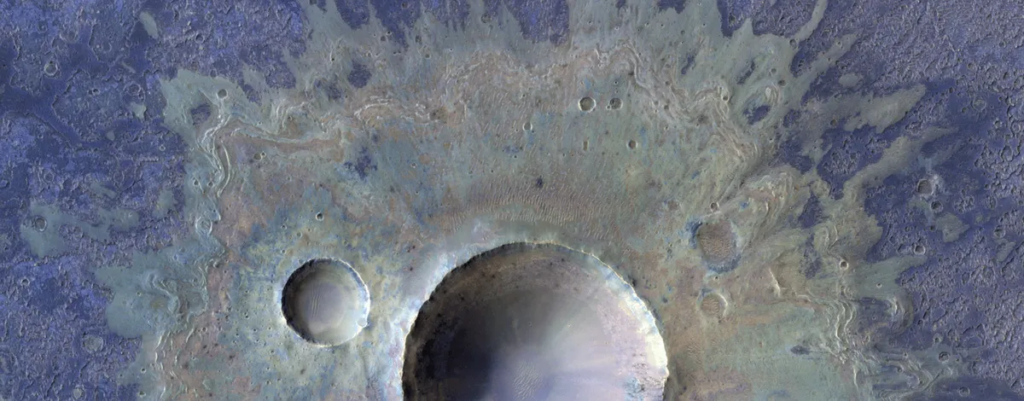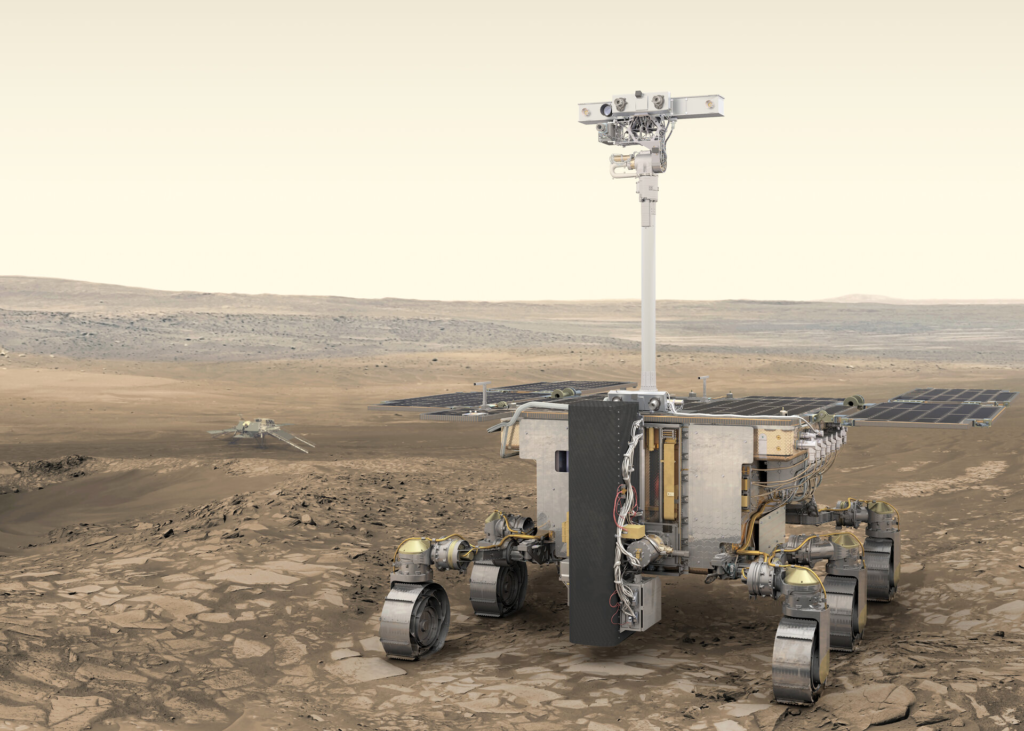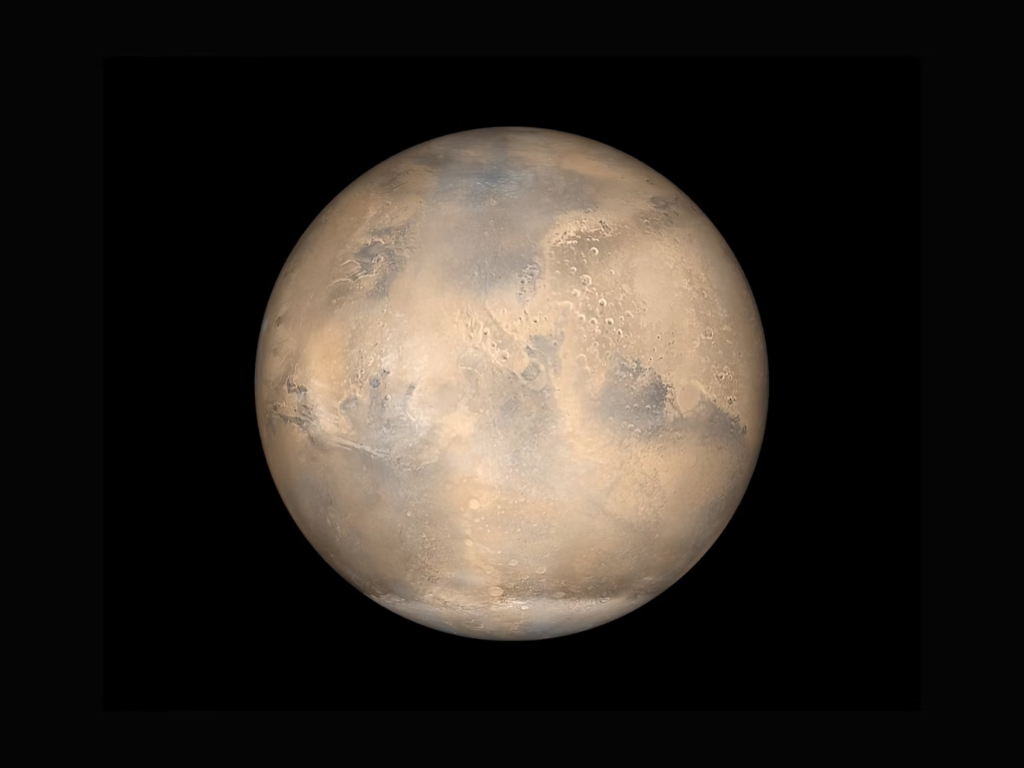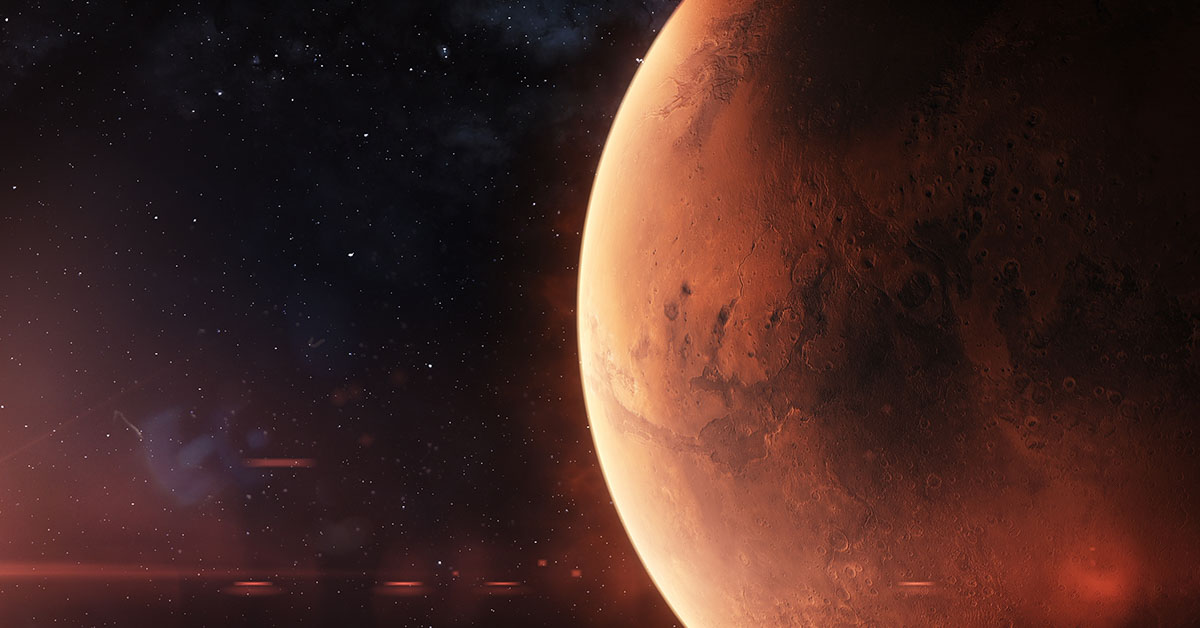The European Space Agency’s ExoMars Trace Gas Orbiter (TGO) has recently captured a series of remarkable images that shed light on the Martian landscape, revealing significant geological features and evidence of water ice. The images, taken from a vantage point of approximately 400 kilometers (248 miles) above Mars, highlight the diversity and history of the planet’s surface. This article delves into these discoveries, exploring the insights they provide into Mars’ past and its potential to have harbored life.
Utopia Planitia: A Colossal Crater with a Watery Past

One of the most striking images captured by the TGO features an eight-kilometer-wide crater located in Utopia Planitia, the largest known impact basin in the solar system. Utopia Planitia spans a vast 3,300 kilometers (2,050 miles) in diameter, roughly twice the size of the Sahara Desert. The crater’s smooth, steep-walled structure provides compelling evidence of water ice beneath the surface. When an asteroid struck this region, the immense heat generated by the impact melted the subsurface water ice, propelling a mixture of liquid water and dust upwards. This process created a fluidized ejecta blanket around the crater, indicating the presence of water ice at the time of impact. The smooth appearance of the crater and the visible landslides and wind-sculpted ripples further support the theory of a water-rich history.
Ancient Craters of the Southern Highlands Of Mars

The TGO also captured images of an ancient, 15-kilometer-wide crater in the southern highlands of Mars, specifically in the Tyrrhena Terra region. This crater, significantly older than those in Utopia Planitia, displays a rougher appearance due to extensive weathering and erosion over millennia. The crater’s flattened rim and degraded ejecta blanket suggest it has been subjected to prolonged geological processes. Within this ancient crater, smaller impacts and dark dunes highlight the dynamic environmental history of Mars. The presence of ripples and the central uplift, common in older craters, provide further evidence of the planet’s tumultuous past.
Read More: Mars Appears to be Covered in Creepy Black “Spiders” in New Satellite Images
Ganges Chasma: Diverse Mineralogy and Geology

In addition to the craters in Utopia Planitia and Tyrrhena Terra, the TGO’s Color and Stereo Surface Imaging System (CaSSIS) captured images of craters within the Ganges Chasma. This canyon is part of the Valles Marineris region, the largest canyon system in the solar system. The images reveal craters with ejecta blankets that appear to have been formed in the presence of water ice, similar to those in Utopia Planitia. The use of false-color imaging and infrared data accentuates the mineralogical composition of these craters, allowing scientists to distinguish between different materials on the Martian surface. The larger crater in this region measures 2.5 miles (4 kilometers) in diameter, while a smaller one nearby is 0.7 miles (1.1 kilometers) wide. These features provide valuable insights into the mineral diversity and geological history of Mars.
The ExoMars Mission: Unveiling Mars’ Secrets

The ExoMars program, a collaborative effort between the European Space Agency (ESA) and the Russian space agency Roscosmos, aims to explore Mars’ atmosphere and surface to determine whether life ever existed on the planet. The mission comprises two stages: the first, involves the Trace Gas Orbiter launched in 2016, and the second, is set to launch in 2028, which will carry the Rosalind Franklin rover. The TGO’s primary objective is to analyze trace gases in Mars’ atmosphere, which could indicate biological or geological activity. Additionally, the orbiter’s high-resolution cameras, such as CaSSIS, provide detailed images of the planet’s surface, revealing its geological features and history.
Implications for the Search for Life On Mars

The discovery of water ice and the detailed examination of craters on Mars have significant implications for the search for life on the Red Planet. On Earth, the presence of water is a key indicator of potential life. While it remains uncertain whether this principle applies to other planets, the evidence of water ice on Mars raises the possibility that the planet may have once harbored life. The smooth, fluidized features of the craters, coupled with the mineralogical diversity revealed by false-color imaging, suggest that Mars experienced significant water activity in its past. Understanding the history of water on Mars is crucial for future missions aimed at uncovering signs of past or present life.
As the ExoMars mission progresses, the scientific community eagerly anticipates further discoveries that will continue to unravel the mysteries of Mars and its potential to support life.
Read More: Scientists Are Testing Astronauts In Long Mars Simulation, And The Results Are Worrying
This content has, in part, been generated with the aid of an artificial intelligence language model. While we strive for accuracy and quality, please note that the information provided may not be entirely error-free or up-to-date. We recommend independently verifying the content and consulting with professionals for specific advice or information. We do not assume any responsibility or liability for the use or interpretation of this content.

